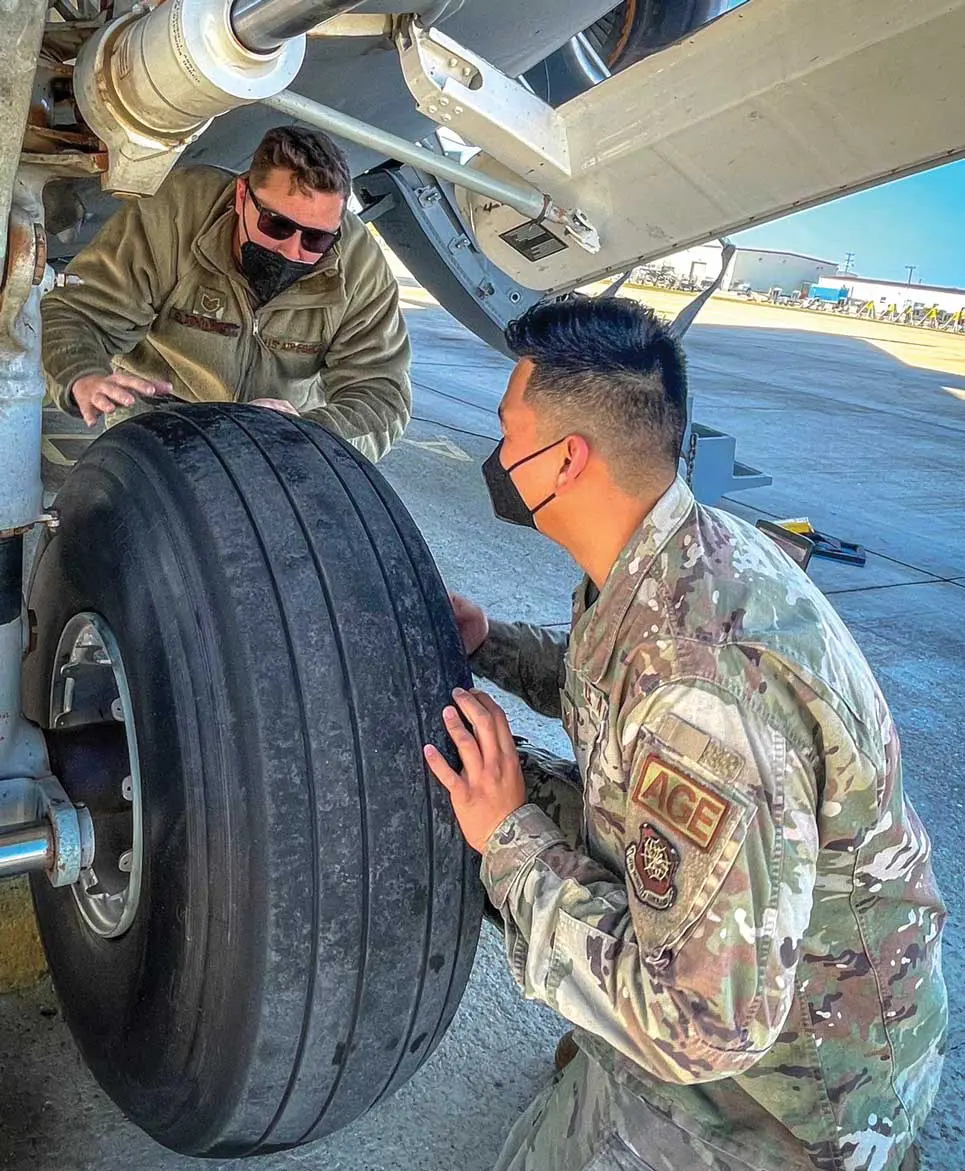725th Air Mobility Squadron Conducts First Local Multi-Capable Airman Training
By 1ST LT EMMA C. QUIRK, 521ST AIR MOBILITY OPERATIONS WING, RAMSTEIN AB, GERMANY
“Multi-capable Airmen (MCA) training maximizes the potential of our members and teams,†said Lt Col Michael Slaughter, 725th Air Mobility Squadron (AMS) Commander.
Slaughter echoes the sentiments of many Air Mobility Command (AMC) leaders who have overseen the implementation of MCA training.
MCA is the process of exposing Airmen to tasks outside of their core Air Force specialty code. It is often used within a cross-functional team so Airmen can learn each other’s strengths and expertise.
Slaughter explains this style of training prepares Airmen to execute a variety of tasks, which makes units more agile and versatile for the needs of the missions.
The Airmen of the 521st Air Mobility Operations Wing (an AMC unit headquartered at Ramstein Air Base, Germany) who are assigned to the 725 AMS, a tenant unit of Naval Station (NAVSTA) Rota, Spain, completed their first iteration of MCA training in early 2022.
Airmen across the 725 AMS participated in the weeklong familiarization of new tasks using real equipment as well as virtual reality training tools.
Several Airmen beta-tested the MCA training program, such as SSgt Reynaldo Guevarra, 725 AMS Aerospace Ground Equipment (AGE) Craftsman. Although Guevarra typically maintains generators, air conditioners, hydraulic pressuring units, nitrogen carts, and turbine compressors, the Airman was tasked with learning basic aircraft maintenance. Guevarra excelled in his performance of maintenance tasks such as marshaling aircraft, aircraft refueling, and aircraft tire serviceability inspections.
“Learning aircraft maintenance duties helped me grow as a maintainer and as an overall NCO [Noncommissioned Officer].†Guevarra added, “I now have the skills and dual qualifications to not only serve in my normal capacity but also augment aircraft generation.â€
As a result of the training, Guevarra better understands the impacts of other Air Force specialty codes as they work toward the common goal of “putting birds in the air.â€
Another beta-test trainee was SrA Howard Johnson, 725 AMS Crew Chief. His normal duties are to service the C-17 Globemaster III. This assignment includes performing scheduled and unscheduled aircraft maintenance, troubleshooting aircraft systems, and servicing and inspecting AMC aircraft transiting through European and African theaters.
During the training, Johnson learned standard AGE duties from TSgt William Zelaya, 725 AMS AGE Training Lead. He also performed service inspections on aircraft external power carts and flight line dispatch of various AGE equipment.
When asked about the impact of the training, Johnson said he better understands the duties of other maintenance career fields and how they affect one another. Johnson added, “This training will allow the squadron to fill voids swiftly, knowing the job will be handled correctly.â€
The squadron’s program was initiated by TSgt Ozzie Slawnikowski, 725 AMS Crew Chief Non-Commissioned Officer in Charge. As the lead developer of the program, Slawnikowski partnered with Zelaya to equip members with the expertise needed to fulfill taskings in the European, Central, and African theaters.
“I encourage my troops to ‘do big things,’†Slawnikowski exclaimed. “My hopes are to inspire other Airmen to step up and not be afraid to get out of their comfort zone.â€
An important part of the early development of any new initiative is two-way feedback. Both Slawnikowski and Zelaya commented on the positive feedback and excitement of the trainees.
Moving forward, both are prepared to readdress the training and tailor it to meet the needs of each trainee in order to sharpen the program to use the members’ time efficiently.
In the following months, the MCA trainees will spend several days within the aircraft maintenance unit and AGE flight environment to refine their competency.
“It was awesome watching Guevarra smile after launching his first jet, knowing he directly generated that mission,†Slawnikowski shared as he reflected on the training. “I am proud to create a lasting program that connects our Airmen to Department of the Air Force-level efforts. This training offers them a chance to step out of their normal day-to-day duties and see a different side of operations.â€
Training to become an MCA is essential to the future fight. As Gen Minihan stated in the 2022 Air Mobility Command Strategy, a goal of the command is to develop roadmaps for operational employment of multi-capable Airmen. MCA training is critical to enabling Agile Combat Employment, which is a proactive and reactive operational scheme of a maneuver designed to address the challenges of projecting combat power around the world with a significantly reduced global footprint, increased risk from adversarial technological advances, and fiscal and political constraints.
The training of Airmen across the 725 AMS demonstrates the positive reactions to MCA and a promising evolution of training.



